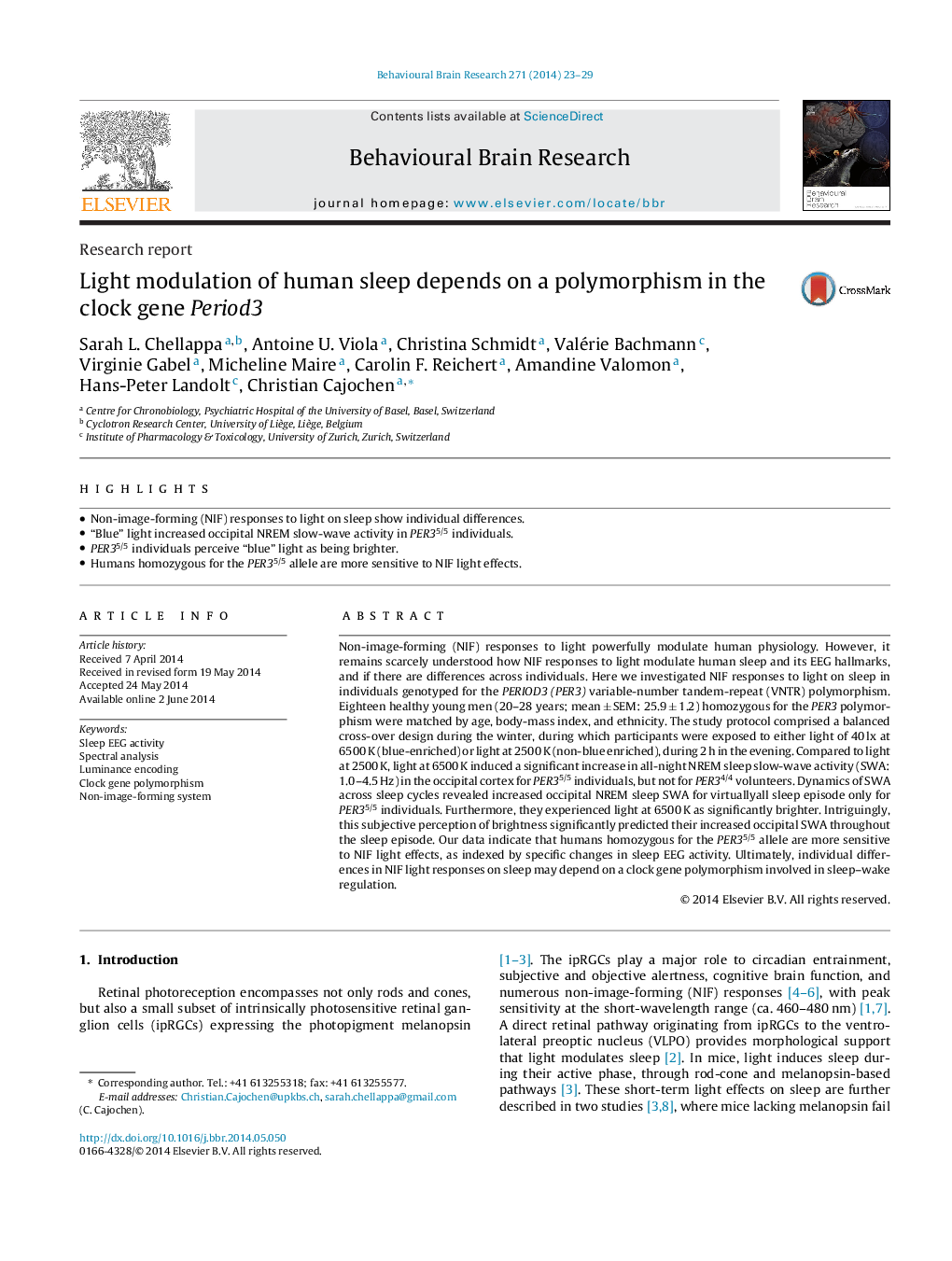| کد مقاله | کد نشریه | سال انتشار | مقاله انگلیسی | نسخه تمام متن |
|---|---|---|---|---|
| 6257994 | 1612961 | 2014 | 7 صفحه PDF | دانلود رایگان |
- Non-image-forming (NIF) responses to light on sleep show individual differences.
- “Blue” light increased occipital NREM slow-wave activity in PER35/5 individuals.
- PER35/5 individuals perceive “blue” light as being brighter.
- Humans homozygous for the PER35/5 allele are more sensitive to NIF light effects.
Non-image-forming (NIF) responses to light powerfully modulate human physiology. However, it remains scarcely understood how NIF responses to light modulate human sleep and its EEG hallmarks, and if there are differences across individuals. Here we investigated NIF responses to light on sleep in individuals genotyped for the PERIOD3 (PER3) variable-number tandem-repeat (VNTR) polymorphism. Eighteen healthy young men (20-28 years; mean ± SEM: 25.9 ± 1.2) homozygous for the PER3 polymorphism were matched by age, body-mass index, and ethnicity. The study protocol comprised a balanced cross-over design during the winter, during which participants were exposed to either light of 40 lx at 6500 K (blue-enriched) or light at 2500 K (non-blue enriched), during 2 h in the evening. Compared to light at 2500 K, light at 6500 K induced a significant increase in all-night NREM sleep slow-wave activity (SWA: 1.0-4.5 Hz) in the occipital cortex for PER35/5 individuals, but not for PER34/4 volunteers. Dynamics of SWA across sleep cycles revealed increased occipital NREM sleep SWA for virtuallyall sleep episode only for PER35/5 individuals. Furthermore, they experienced light at 6500 K as significantly brighter. Intriguingly, this subjective perception of brightness significantly predicted their increased occipital SWA throughout the sleep episode. Our data indicate that humans homozygous for the PER35/5 allele are more sensitive to NIF light effects, as indexed by specific changes in sleep EEG activity. Ultimately, individual differences in NIF light responses on sleep may depend on a clock gene polymorphism involved in sleep-wake regulation.
Journal: Behavioural Brain Research - Volume 271, 1 September 2014, Pages 23-29
